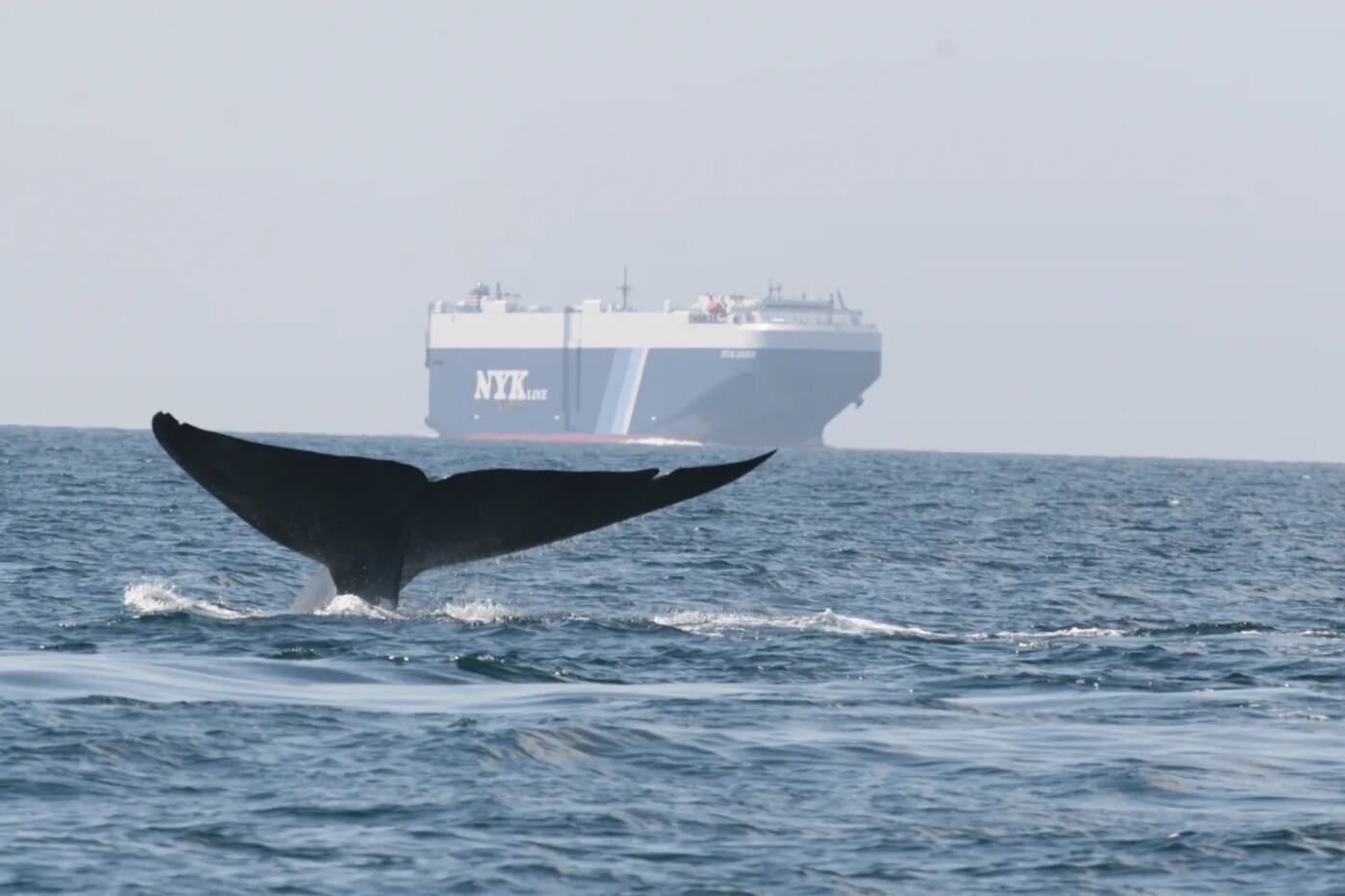The ocean is no place to escape a heat wave. According to a recent condition report from the Greater Farallones and Cordell Bank National Marine Sanctuaries, the effects of a 2014 to 2016 marine heat wave had a cascading effect with impacts that echoed from deep sea krill to shoreline restaurants.
The domino effect began with the tiny shrimp-like critters that feed the biggest animals on earth, blue whales. Looking at data collected between 2010 and 2022, scientists with the National Oceanographic and Atmospheric Administration found that the heat wave caused a notable decline in nutritious krill, and a proportional increase in less nutritious, gelatinous zooplankton in the sanctuaries off the Northern California coast.

With less krill available, humpback whales switched to feeding on forage fish, like anchovies, which thrive in a zone closer to the coast. That, in turn caused an increase in the whales swimming through human activities, making them more vulnerable to ship strikes. Crab fishing starts in the fall and winter, which is migratory season for whales, causing an increase in entanglements.
“Historically we would see whales arriving in the sanctuary in the spring and leaving in the late fall, but over the past decade or so we have seen whales arriving earlier and staying later,” said Danielle Lipski, research ecologist at the sanctuaries. “We are even seeing, particularly humpback, whales staying in the sanctuary year-round.”

Another chain reaction was triggered by sea star wasting disease, a pathogen that kills sea stars, a major predator to purple sea urchins. Now there are too many urchins eating away at the kelp forests. The result is that marine areas that were once vibrant kelp forests are completely barren of vegetation and dotted with thousands of purple orbs — areas referred to as “urchin barrens.”
“A good way to put the severity of this kelp loss problem into perspective is to imagine if we lost more than 90% of our forested land in the Sierras,” the sanctuary’s education specialist Jennifer Stock said in a statement.
Loss of kelp caused the starvation of native endangered red abalone, a large edible sea snail.
In terms of adaptation and mitigation measures, we cannot stop climate change ourselves, but this report will help us think about other ways that we can reduce the pressures to the ecosystem, so that some species have a chance to adapt and survive in in the face of climate change.
Danielle Lipski, research ecologist
“They just couldn’t compete with the ravenous purple sea urchins. And when the abalone starved, the red abalone sport fishery closed. This is a big hit to the local economy where the recreational abalone fishery brings in up to $44 million per year,” said Stock.
Dungeness crab, salmon, rockfish, and groundfish commonly targeted by commercial and recreational fisheries depend on clean water to thrive. During the condition report period, the sanctuary experienced issues with biotoxins and contaminants that pose risks to human health.
Advisories were issued to limit consumption of some fish species from Tomales Bay due to mercury contamination. There were 131 instances of elevated fecal coliform bacteria at Tomales Bay that led to beach advisories. Biotoxins do not typically make shellfish or fish sick, but they will make humans who eat them sick.
The Dungeness crab fishery also experienced temporary closures in 2015 to 2018 due to domoic acid, which causes amnesic shellfish poisoning. In mild cases of human consumption, domoic acid can cause dizziness, vomiting, and diarrhea, and in severe cases can cause breathing complications, seizures, or death.
Fishing community’s struggles
Commercial fisherman Dick Ogg is from the small fishing community of Bodega Bay adjacent to the sanctuary, and says the closures had a direct impact on his community.
“Our whole industry is fishing — that’s it. Dungeness crab is 90% of our income in this area and it’s all made during a very short window,” explains Ogg. “During the closure, fishermen had no income.
“In terms of adaptation and mitigation measures, we cannot stop climate change ourselves, but this report will help us think about other ways that we can reduce the pressures to the ecosystem, so that some species have a chance to adapt and survive in in the face of climate change,” said Lipski, the research ecologist.
The sanctuary is getting ready to start their management plan review, which is a public process. This winter, there will be a series of scoping meetings, where people can provide input on what the sanctuary should focus on. Then they will create a draft document for public comment that will guide sanctuary management over the next five to 10 years.
The post Impacts of ocean heat wave found in Greater Farallones Nat’l Marine Sanctuary — report appeared first on Local News Matters.
